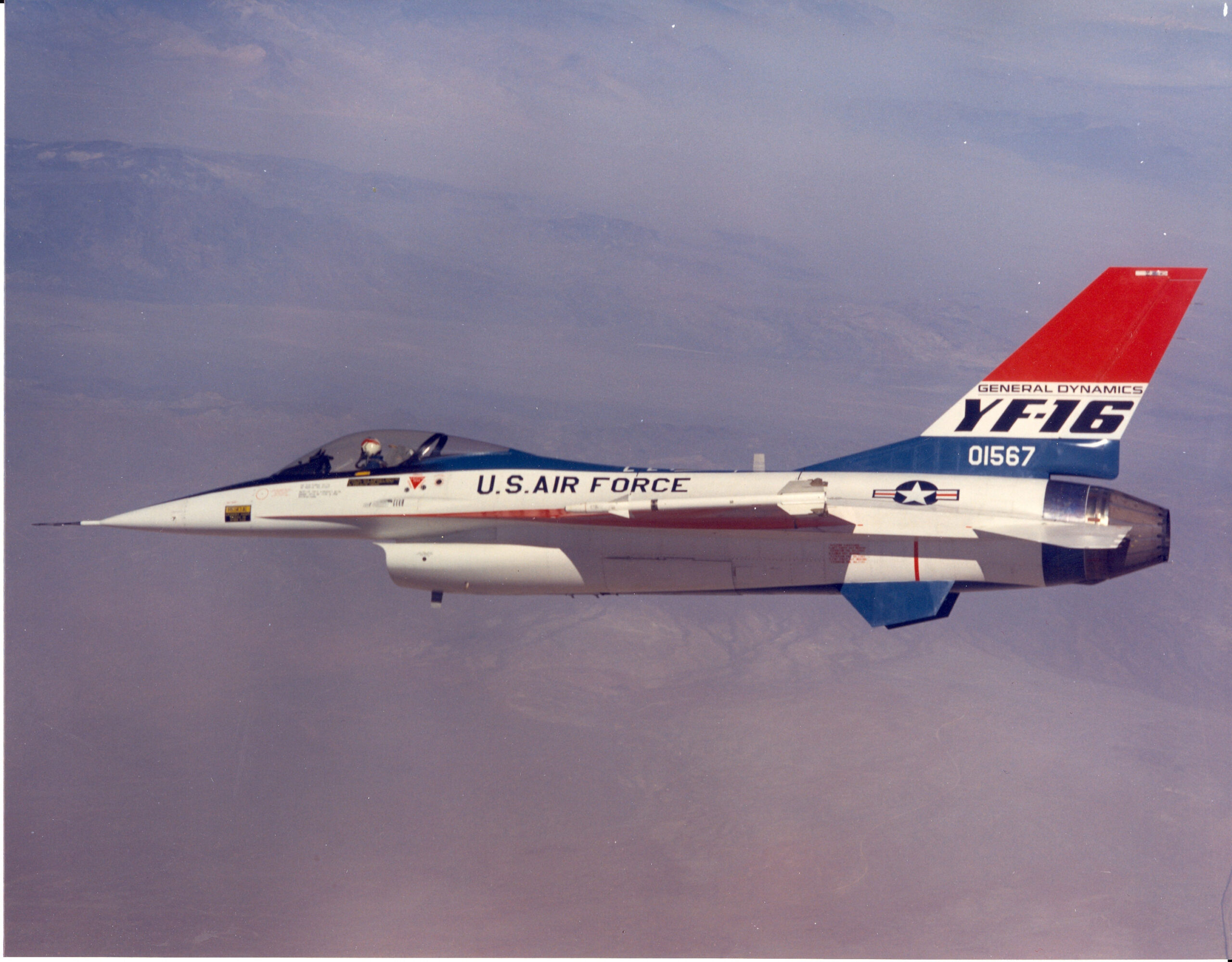
![]() 2 February 1974: Test pilot Philip F. Oestricher made the first test flight of the General Dynamics YF-16 Light Weight Fighter prototype, 72-1567, at Edwards Air Force Base, California. During the 90-minute flight the airplane reached 400 knots (740.8 kilometers per hour) and 30,000 feet (9,144 meters).
2 February 1974: Test pilot Philip F. Oestricher made the first test flight of the General Dynamics YF-16 Light Weight Fighter prototype, 72-1567, at Edwards Air Force Base, California. During the 90-minute flight the airplane reached 400 knots (740.8 kilometers per hour) and 30,000 feet (9,144 meters).
Built at Fort Worth, Texas, the prototype rolled out 13 December 1973. It was loaded aboard a Lockheed C-5A Galaxy heavy-lift transport and was flown to Edwards. During high-speed taxi tests on 20 January 1974 the YF-16 began to oscillate in the roll axis, threatening to touch the wingtips to the ground.

To prevent damage, Phil Oestricher lifted off to regain control and after six minutes, touched down again.
The airplane had sustained damage to the right horizontal stabilizer. Engineers determined that the airplane’s roll control was too sensitive, and that the exhaust nozzle was improperly wired, resulting in too much thrust at low throttle settings. The YF-16 was repaired and was ready for its first test flight on 2 February.
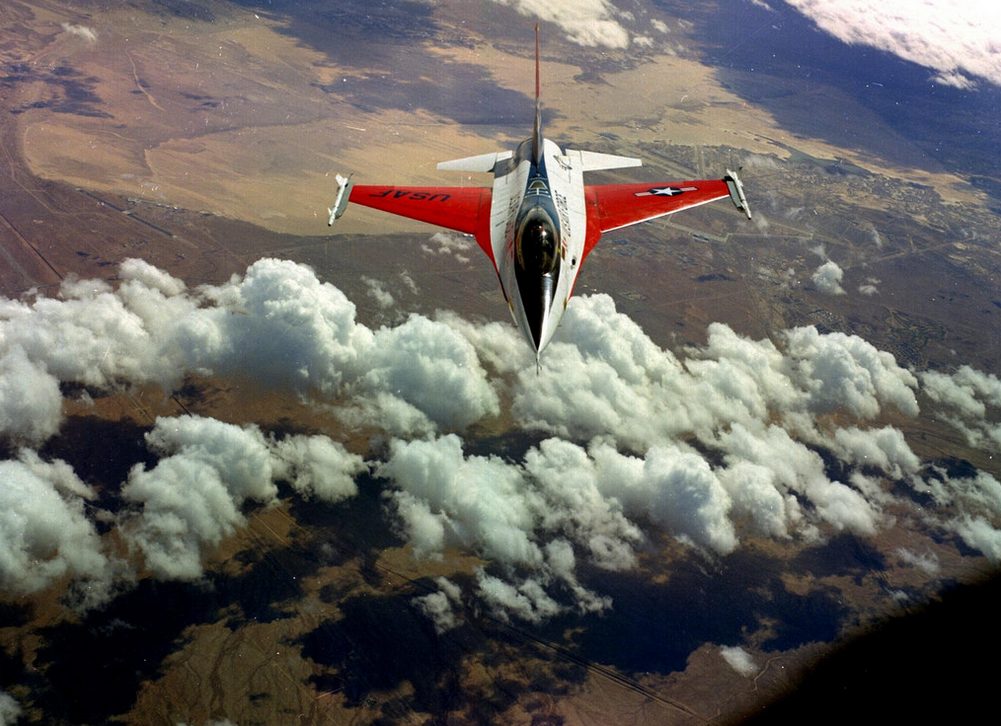
The two YF-16 prototypes competed against the Northrop YF-17 for the role of the Air Force and NATO light weight fighter program. The YF-16 was selected and single-seat F-16A and two-seat F-16B fighters were ordered. The YF-17 was developed into the U.S. Navy’s F/A-18 Hornet.
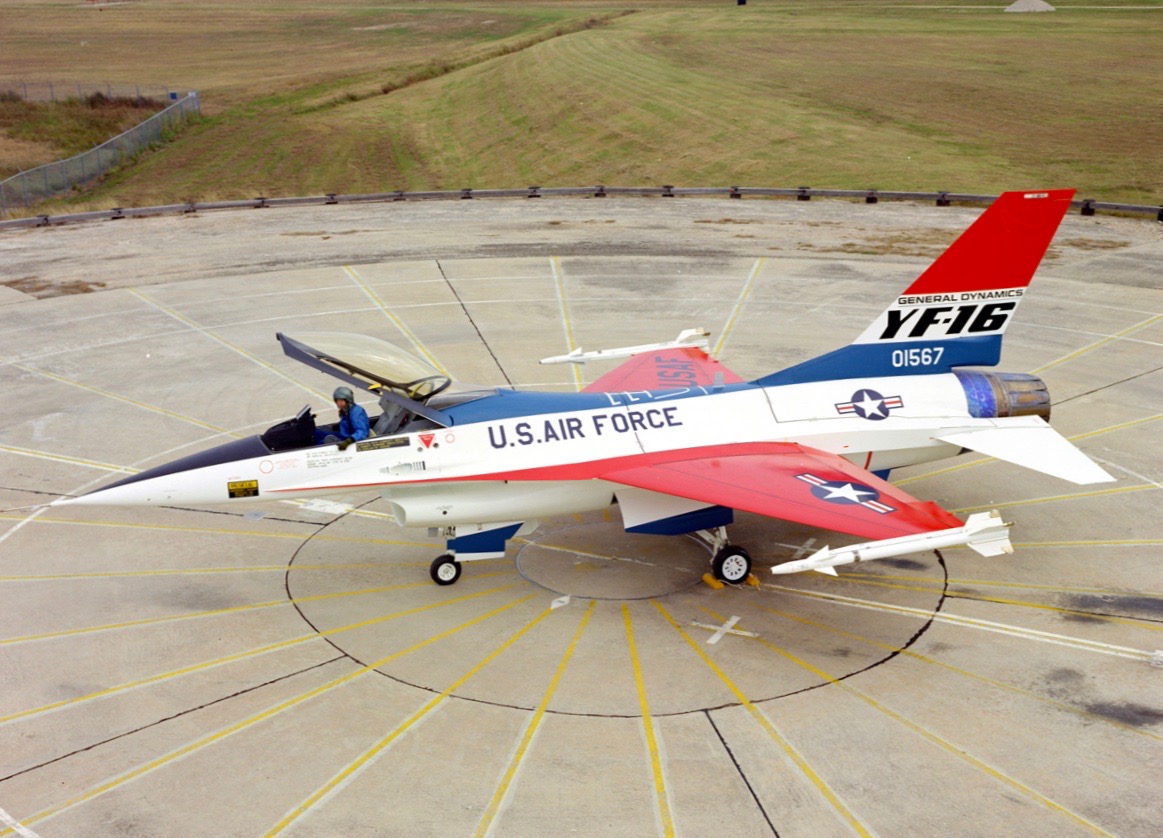
The F-16 was designed to be a highly-maneuverable, light weight air superiority day fighter, but it has evolved into a multi-role fighter/fighter bomber with all weather attack capability.
The F-16 (now, a Lockheed Martin product) remains in production, with more than 4,500 having been built in the United States and under license in Europe. The United States Air Force has more than 1,200 F-16s in service.
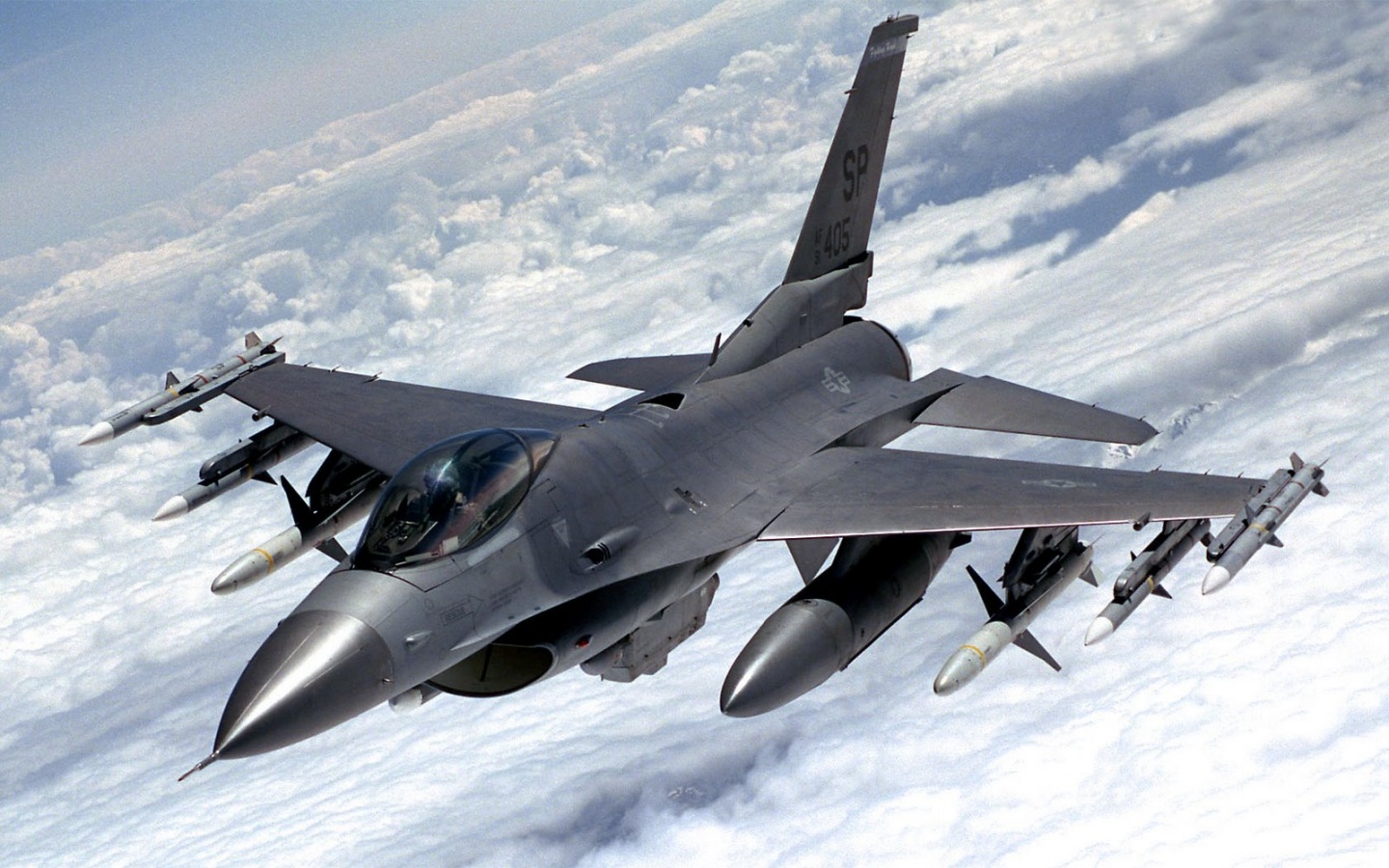
The F-16C is a single-seat, single-engine Mach 2+ fighter. It is 49.3 feet (15.03 meters) long with a wingspan of 32.8 feet (10.0 meters) and overall height of 16.7 feet (5.09 meters). It has an empty weight of 20,300 pounds (9,207.9 kilograms) and maximum takeoff weight of 48,000 pounds (21,772 kilograms).
 The fighter is powered by one Pratt & Whitney F100-PW-229 or General Electric F110-GE-129 afterburning turbofan engine which produces 17,800 pounds of thrust (79.178 kilonewtons) each, or 29,100 pounds (129.443 kilonewtons) with afterburner) (F100), or 29,500 pounds (131.223 kilonewtons) (F110).
The fighter is powered by one Pratt & Whitney F100-PW-229 or General Electric F110-GE-129 afterburning turbofan engine which produces 17,800 pounds of thrust (79.178 kilonewtons) each, or 29,100 pounds (129.443 kilonewtons) with afterburner) (F100), or 29,500 pounds (131.223 kilonewtons) (F110).
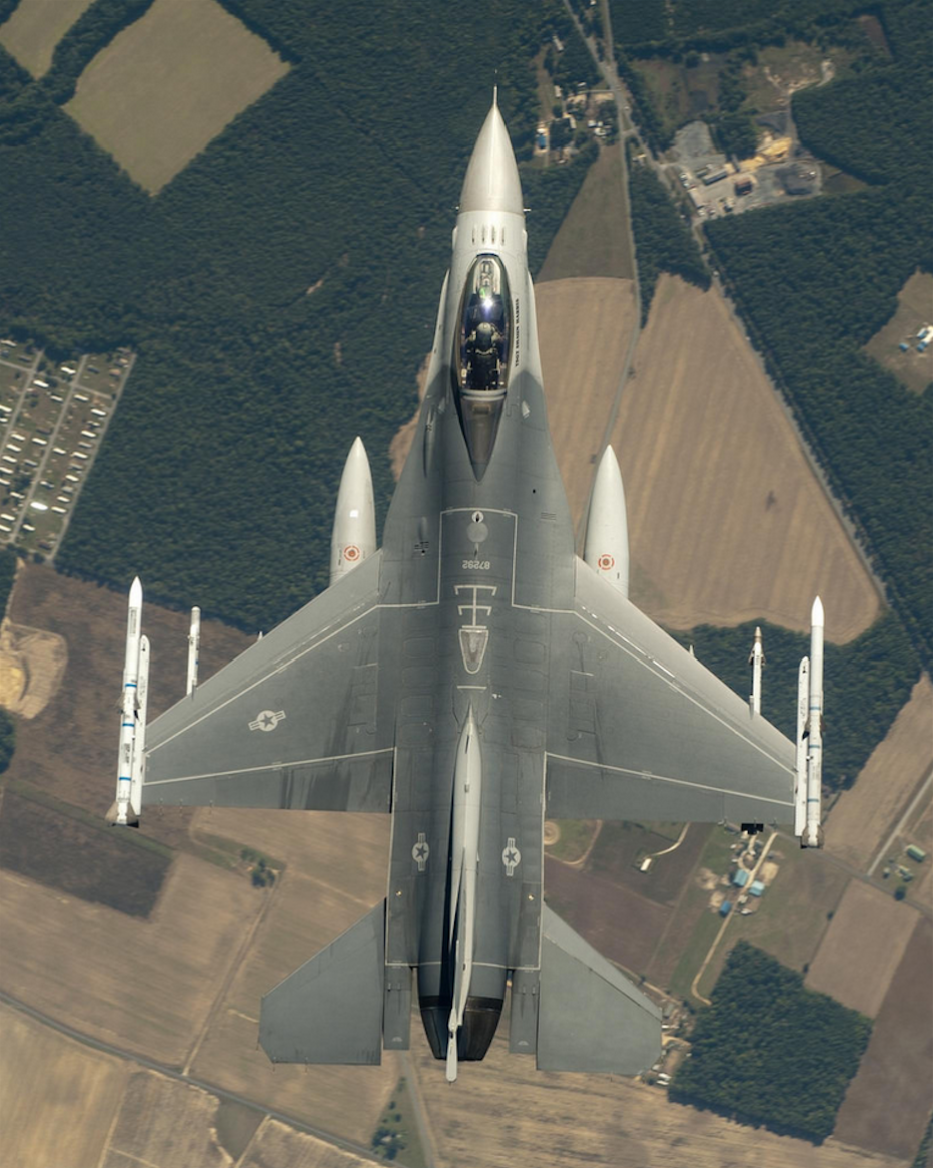
The Fighting Falcon has a maximum speed of Mach 1.2 (913 miles per hour, or 1,470 kilometers per hour) at Sea Level, and Mach 2+ at altitude. The fighter’s service ceiling is higher than 50,000 feet (15,240 meters). Maximum range is 2,002 miles (3,222 kilometers).
The F-16C is armed with one General Electric M61A1 Vulcan 20 mm 6-barreled Gatling gun with 511 rounds of ammunition, and can carry a wide range of air-to-air and air-to-ground missiles and bombs.
The first prototype YF-16, 72-1567, is now on display at the Virginia Air and Space Center, Hampton, Virginia.
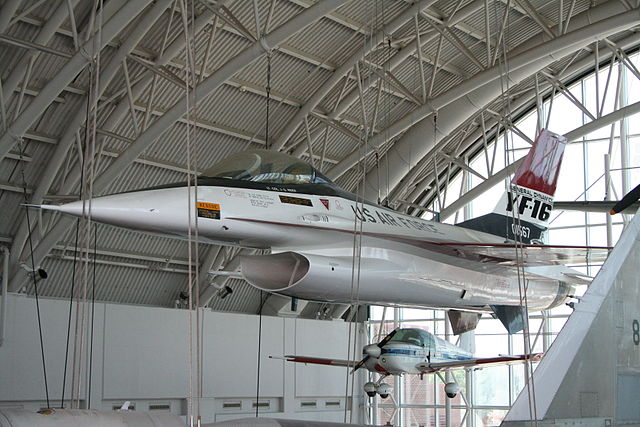
© 2017, Bryan R. Swopes